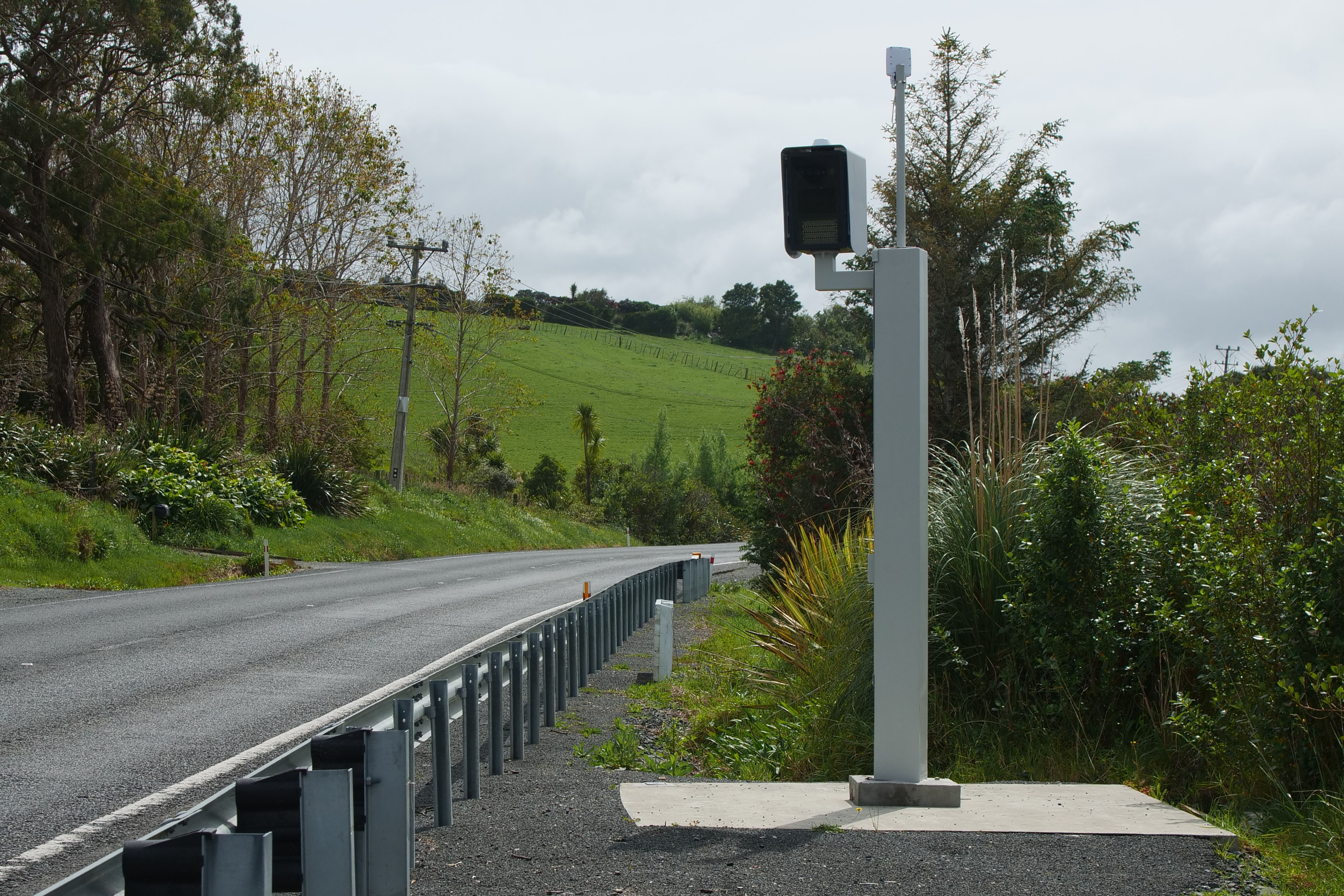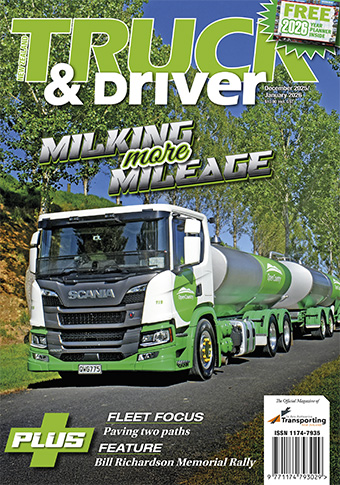Aeolus Truck & Driver News


New speed and drugs enforcement begins
Aeolus Truck & Driver News
The first average speed safety camera site is scheduled to be operational from December 1 and roadside drug testing will commence in the Wellington region ahead of a nationwide introduction in 2026.
Subject to the final testing, the first set of average speed safety cameras is expected to begin enforcing speeds at Matakana Road in Warkworth from December 1.
Average speed cameras work by calculating a vehicle’s average speed along a length of road between two camera locations. They measure the time the vehicle takes to travel between the cameras and calculate the average speed. Drivers are only ticketed if their average travel speed between two cameras is over the limit.
...The first average speed safety camera site is scheduled to be operational from December 1 and roadside drug testing will commence in the Wellington region ahead of a nationwide introduction in 2026.
Subject to the final testing, the first set of average speed safety cameras is expected to begin enforcing speeds at Matakana Road in Warkworth from December 1.
Average speed cameras work by calculating a vehicle’s average speed along a length of road between two camera locations. They measure the time the vehicle takes to travel between the cameras and calculate the average speed. Drivers are only ticketed if their average travel speed between two cameras is over the limit.
NZTA Waka Kotahi says the cameras can distinguish between light and heavy vehicles, meaning that on 100km/h and 110km/h roads, trucks and buses will be measured against their maximum permitted limit of 90km/h.
Earlier this year NZTA announced 11 sites – all in the upper half of the North Island – where the new technology will be deployed. A further six locations – three in the lower North Island and three in the South Island – have been announced along with a timeline for the rollout.
The new locations are:
Southland – SH6 Kingston to SH97 Five Rivers
Canterbury – SH8 Lake Tekapo to Twizel
Otago – SH1 Allanton to Waihola
Wellington – SH2 Te Mārua to Brown Owl
Hawke’s Bay – SH2 Te Hauke to Pakipaki
Manawatū-Whanganui – SH1 Sanson to Foxton
Tara Macmillan, NZTA Head of Regulatory Strategic Programmes, says the locations for average speed safety cameras have been determined by analysing crash patterns, traffic volumes and the percentage of drivers exceeding the posted speed limits.
“All of this evidence tells us that there is a serious risk of people being killed or seriously injured in crashes on these stretches of road,” she says.
“The risk of crashes is significantly reduced if more people drive to the speed limit. By installing average speed safety cameras, we are reducing that risk and making these roads safer for everyone who uses them.
“Safety cameras reduce speeding, making crashes less likely to occur, and ensure that if crashes do happen, the people involved are far more likely to walk away unharmed.
“Speeding drivers can cause serious and irreparable harm on the roads, including deaths and serious injuries. Evidence shows that we can reduce the chance of people being killed or seriously injured in crashes if drivers travel within speed limits, and that is why we have safety cameras.
“Not only are speeding drivers putting themselves and others at risk, they also make our roads less efficient and hinder productivity. Crashes can close a road for hours at a time. Fewer crashes mean fewer road closures, and more consistent and reliable travel times for everyone.”
NZTA will install ‘average speed camera area’ signs before each camera area. On longer stretches of road (corridors), drivers will see extra ‘average speed camera area’ signs along the way. These signs are a reminder to drivers to check their speed and slow down if needed.
The rollout of average speed safety cameras supports the focus on enforcement of high-risk behaviour, including speed, as part of the strategic safety priority in the Government Policy Statement on Land Transport 2024 (GPS).
NZTA does not receive any incentives or funds from tickets issued. Safety camera infringement fees go into the Government Consolidated Fund.
From July 1 2025, NZTA has been responsible for the operation of all safety cameras, and NZ Police no longer operate their mobile safety camera vans. Police officers will continue to issue notices for the offences they detect.
The long-awaited roll-out of the roadside drug testing regime is also scheduled for December, starting in the Wellington District.
Police will begin roadside screening for four key drugs – THC (cannabis), methamphetamine (meth), MDMA (ecstasy) and cocaine – using new oral-fluid testing devices.
“Around 30% of all road deaths now involve an impairing drug. If you take drugs and drive, you’re putting innocent lives at risk – and we will not tolerate it,” says Transport Minister Chris Bishop.
“Our Government is committed to improving road safety, and that includes holding dangerous, drugged-up drivers to account. Rolling out roadside drug testing is a practical step towards safer roads and fewer tragedies.”
Police Minister Mark Mitchell says the new regime will strengthen Police’s ability to keep roads safe.
“This is another positive step in delivering our road-safety strategy and targeting the key factors behind fatal crashes. The ability for Police to screen for impairing drugs is a welcome addition to their enforcement toolbox,” Mr Mitchell says.
The roadside drug testing will scale up from April 2026, with nationwide coverage expected by mid-2026.
Police will be able to stop any motor vehicle at any time to screen the driver for the presence of drugs. The first roadside screening test will be a quick tongue swipe taking just a few minutes. If the test is positive, officers will take a saliva sample for laboratory analysis. While the roadside device detects the four key drugs, the laboratory can test for up to 25 substances listed in the Act.
A second roadside screening test will then be conducted. If that test is positive, the driver will be prohibited from driving for 12 hours to address any immediate road-safety risk. An infringement notice will follow a positive laboratory result.
Drivers who refuse or fail to comply with a roadside drug test will also be issued with an infringement notice. Most drivers will be free to go within about five minutes once they have a negative test result.
The introduction of roadside testing is being welcomed by road freight association Ia Ara Aotearoa Transporting New Zealand.
“The introduction of robust roadside drug testing is long overdue, with several other countries having already introduced this,” says Transporting New Zealand Policy & Advocacy Advisor Mark Stockdale.
“Our members take road safety seriously – in fact the health, safety and wellbeing of drivers is currently one of the top three issues flagged in our 2025 Road Freight Industry Survey. Many road freight operators already undertake random drug testing in the workplace, and the plan by Police to perform 50,000 random roadside drug tests per year will help improve road safety for all road users,” Stockdale says.
To prepare for the introduction of the new random roadside drug test, Transporting New Zealand is running a webinar for truck and bus operators on Friday November 28.
The webinar will feature the NZ Police Commercial Vehicle Safety Team explaining how the new test will work, the drugs being tested, and what the penalties are.
Other speakers include The Drug Detection Agency discussing what their workplace testing shows and how to implement drug and alcohol policies in the workplace, while Gibson Sheat Lawyers will explain employers’ obligations and rights to undertake testing in the workplace.



 + EQUIPMENT GUIDE - FREE
+ EQUIPMENT GUIDE - FREE
